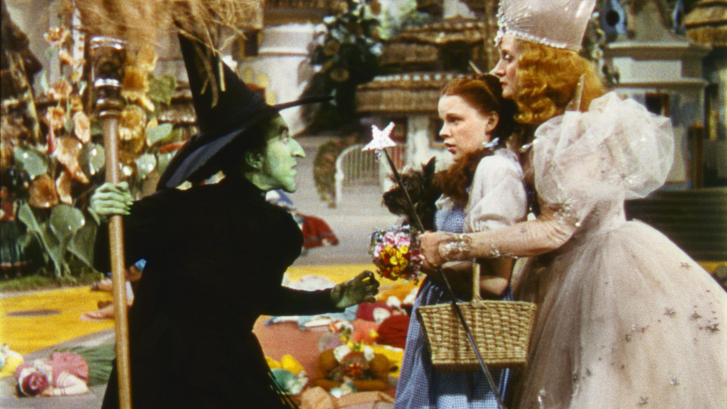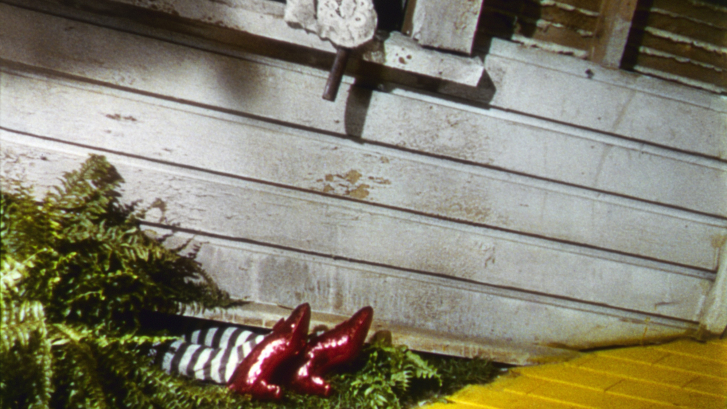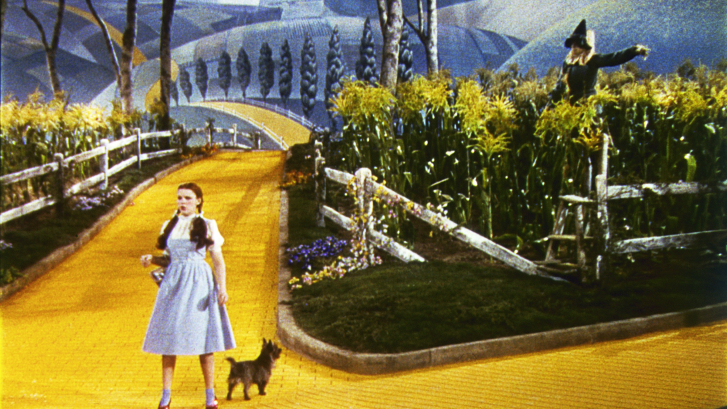The Wizard of Oz

Young Dorothy, full of yearning for “some place where there isn’t any trouble,” is literally whisked from rural Kansas to the magical Land of Oz. When she opens the door of her house after the tornado, she finds herself “somewhere over the rainbow” … The Wizard of Oz was a milestone in the history of colour film. It was conceived as MGM’s answer to Disney’s Snow White (1937), and the colour scheme is as unreal as the story. This cinematic mixture of musical, fairy tale, and fantasy has been delighting moviegoers around the world for 75 years. Among them is British Indian writer Salman Rushdie, who said “once the door is open, colour floods the screen (…) the yellow of the brick road, the red of the poppy field, the green of the Emerald City and of the witch’s skin. So striking were these colour effects that, soon after seeing the film as a child, I began to dream of greenskinned witches. With its transition from black-and-white to colour, The Wizard of Oz marked a new era in movies. Rushdie also called the film a blueprint of all emigrant dreams, “a film about the joys of going away, of leaving the greyness and entering the colour”.
details
-
Runtime
102 min -
Country
United States -
Year of Presentation
2015 -
Year of Production
1939 -
Director
Victor Fleming -
Cast
Judy Garland, Frank Morgan, Ray Bolger -
Production Company
-
Berlinale Section
Retrospective -
Berlinale Category
Feature Film
pictures from the movie
Biography Victor Fleming
Victor Fleming (February 23, 1889 – January 6, 1949) was an American film director, cinematographer, and producer. His most popular films were The Wizard of Oz (1939), and Gone with the Wind (1939), for which he won an Academy Award for Best Director. He showed a mechanical aptitude early in life; while working as a car mechanic, he met the director Allan Dwan, who took him on as a camera assistant. He soon rose to the rank of cinematographer, working with both Dwan and D. W. Griffith, and directed his first film in 1919.
Many of his silent films were action movies or Westerns. Because of his robust attitude and love of outdoor sports, he became known as a "man's director"; however, he also proved an effective director of women. Under his direction, Vivien Leigh won the Best Actress Oscar, Hattie McDaniel won for Best Supporting Actress, and Olivia De Havilland was nominated.
source: wikipedia.org
Filmography Victor Fleming
1930 Renegades | 1935 The Farmer Takes a Wife | 1938 Test Pilot | 1948 Joan of Arc


